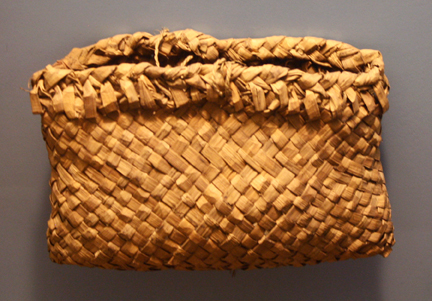|
Oryzeae
Oryzeae is a tribe of flowering plants in the true grass family, Poaceae. It contains 11 genera, including both cultivated rice ('' Oryza'') and wild rice Wild rice, also called manoomin, Canada rice, Indian rice, or water oats, is any of four species of grasses that form the genus ''Zizania'', and the grain that can be harvested from them. The grain was historically gathered and eaten in both ... (''Zizania''). Genera There are 11 genera classified in two subtribes: References External links * * Oryzoideae Poaceae tribes {{Poaceae-stub ... [...More Info...] [...Related Items...] OR: [Wikipedia] [Google] [Baidu] |
Oryza
''Oryza'' is a genus of plants in the grass family. It includes the major food crop rice (species ''Oryza sativa'' and ''Oryza glaberrima''). Members of the genus grow as tall, wetland grasses, growing to tall; the genus includes both annual and perennial species. ''Oryza'' is situated in tribe Oryzeae, which is characterized morphologically by its single-flowered spikelets whose glumes are almost completely suppressed. In ''Oryza'', two sterile lemma simulate glumes. The tribe Oryzeae is in subfamily Ehrhartoideae, a group of Poaceae tribes with certain features of internal leaf anatomy in common. The most distinctive leaf characteristics of this subfamily are the arm cells and fusoid cells found in their leaves.Heywood, V.H. Flowering Plants of the World 1993 Oxford University Press One species, Asian rice ( ''O. sativa''), provides 20% of global grain and is a food crop of major global importance. The species are divided into two subgroups within the genus. Species Inside ... [...More Info...] [...Related Items...] OR: [Wikipedia] [Google] [Baidu] |
Potamophila
''Potamophila'' is a genus of Australian plants in the grass family. The only known species is ''Potamophila parviflora''.Ge, S., et al. (2002)A phylogeny of the rice tribe Oryzeae (Poaceae) based on matK sequence data.''American Journal of Botany'' 89(12) 1967-72.Guo, Y. and S. Ge. (2005)Molecular phylogeny of Oryzeae (Poaceae) based on DNA sequences from chloroplast, mitochondrial, and nuclear genomes.''American Journal of Botany'' 92(9) 1548-58.Abedinia, M., et al. (1998)Distribution and phylogeny of ''Potamophila parviflora'' R.Br., a wild relative of rice from eastern Australia.''Genetic Resources and Crop Evolution'' 45 399-406.Genus ''Potamophila''. New South Wales Flora Online. National Herbarium, Royal Botanic Garden, Sydney. It is |
Wild Rice
Wild rice, also called manoomin, Canada rice, Indian rice, or water oats, is any of four species of grasses that form the genus ''Zizania'', and the grain that can be harvested from them. The grain was historically gathered and eaten in both North America and China, but eaten less in China, where the plant's stem is used as a vegetable. Wild rice is not directly related to domesticated rice ('' Oryza sativa'' and ''Oryza glaberrima''), although they are close cousins, all belonging to the tribe Oryzeae. Wild-rice grains have a chewy outer sheath with a tender inner grain that has a slightly vegetal taste. The plants grow in shallow water in small lakes and slow-flowing streams; often, only the flowering head of wild rice rises above the water. The grain is eaten by dabbling ducks and other aquatic wildlife. Species Three species of wild rice are native to North America: * Northern wild rice (''Zizania palustris'') is an annual plant native to the Great Lakes region of No ... [...More Info...] [...Related Items...] OR: [Wikipedia] [Google] [Baidu] |
Zizania
Wild rice, also called manoomin, Canada rice, Indian rice, or water oats, is any of four species of grasses that form the genus ''Zizania'', and the grain that can be harvested from them. The grain was historically gathered and eaten in both North America and China, but eaten less in China, where the plant's stem is used as a vegetable. Wild rice is not directly related to domesticated rice (''Oryza sativa'' and ''Oryza glaberrima''), although they are close cousins, all belonging to the tribe Oryzeae. Wild-rice grains have a chewy outer sheath with a tender inner grain that has a slightly vegetal taste. The plants grow in shallow water in small lakes and slow-flowing streams; often, only the flowering head of wild rice rises above the water. The grain is eaten by dabbling ducks and other aquatic wildlife. Species Three species of wild rice are native to North America: * Northern wild rice (''Zizania palustris'') is an annual plant native to the Great Lakes region of ... [...More Info...] [...Related Items...] OR: [Wikipedia] [Google] [Baidu] |
Poaceae
Poaceae () or Gramineae () is a large and nearly ubiquitous family of monocotyledonous flowering plants commonly known as grasses. It includes the cereal grasses, bamboos and the grasses of natural grassland and species cultivated in lawns and pasture. The latter are commonly referred to collectively as grass. With around 780 genera and around 12,000 species, the Poaceae is the fifth-largest plant family, following the Asteraceae, Orchidaceae, Fabaceae and Rubiaceae. The Poaceae are the most economically important plant family, providing staple foods from domesticated cereal crops such as maize, wheat, rice, barley, and millet as well as feed for meat-producing animals. They provide, through direct human consumption, just over one-half (51%) of all dietary energy; rice provides 20%, wheat supplies 20%, maize (corn) 5.5%, and other grains 6%. Some members of the Poaceae are used as building materials (bamboo, thatch, and straw); others can provide a source of biofuel, ... [...More Info...] [...Related Items...] OR: [Wikipedia] [Google] [Baidu] |
Maltebrunia
''Maltebrunia'' is a genus of African plants in the grass family. ; Species * '' Maltebrunia leersioides'' Kunth – Madagascar * '' Maltebrunia letestui'' (Koechlin) Koechlin – Cameroon, Gabon Gabon (; ; snq, Ngabu), officially the Gabonese Republic (french: République gabonaise), is a country on the west coast of Central Africa. Located on the equator, it is bordered by Equatorial Guinea to the northwest, Cameroon to the nort ..., Republic of the CongoHubbard, C. E. 1962. Tabula 3595. ''Maltebrunia gabonensis'' C. E. Hubbard. Gramineae. Tribus Oryzeae. Hooker's Icones Plantarum 36: tab. 3595, 1–3. * '' Maltebrunia maroana'' Aug.DC – Madagascar * '' Maltebrunia schliebenii'' (Pilg.) C.E.Hubb. – Tanzania ; formerly included '' Maltebrunia prehensilis - Prosphytochloa prehensilis'' – South Africa, Eswatini References Poaceae genera Grasses of Africa Taxa named by Carl Sigismund Kunth Oryzoideae {{Poaceae-stub ... [...More Info...] [...Related Items...] OR: [Wikipedia] [Google] [Baidu] |
Luziola
''Luziola'' (watergrass) is a genus of New World in the grass family, native to North and South America including the West Indies. ; Species * '' Luziola bahiensis'' (Steud.) Hitchc. - South America ( Colombia to Argentina), Greater Antilles, Central America, USA ( FL AL MS) * '' Luziola brasiliana'' Moric. - Venezuela ( Portuguesa, Apure, Bolívar, Barinas, Guárico), Brazil ( Piauí, Bahia) * '' Luziola brasiliensis'' (Trin.) Swallen - Venezuela (Guárico), Brazil ( Piauí, Rio de Janeiro, São Paulo, Santa Catarina, Rio Grande do Norte) * '' Luziola caespitosa'' Swallen - Brazil (Bahia) * '' Luziola divergens'' Swallen - Minas Gerais * '' Luziola fluitans'' (Michx.) Terrell & H.Rob. - Mexico, Guatemala, USA ( TX LA AR MS AL GA FL NC SC) * '' Luziola fragilis'' Swallen - Costa Rica, Venezuela (Guárico), Bolivia (Beni), Brazil ( Mato Grosso, Minas Gerais, Paraná) * '' Luziola gracillima'' Prodoehl - Mexico, Paraguay, Argentina * '' Luziola peruviana'' J.F.Gm ... [...More Info...] [...Related Items...] OR: [Wikipedia] [Google] [Baidu] |
Gen'ichi Koidzumi
was a Japanese botanist, author of several papers and monographs on phytogeography including work on roses and Amygdaloideae (Rosaceae), maples (Aceraceae), mulberries (the genus ''Morus''), and many other plants. His name is sometimes transliterated as Gen’ichi or Gen-Iti, or as Koizumi. Biography Gen-ichi Koidzumi was born in Yonezawa in Yamagata Prefecture in 1883. After graduating from the Sapporo Agricultural College, he studied biology at Tokyo Imperial University from 1905, continuing his studies there under Matsumura Jinzō, and receiving his doctorate in 1916. In 1919, he was appointed assistant professor at Kyoto Imperial University, where he remained (other than for a tour of the herbaria of Europe and the United States from 1925 to 1927) until his retirement in 1943; he was promoted to full professor in 1936. In 1932, he founded the Societas Phytogeographica and the journal ''Acta Phytotaxonomica et Geobotanica (APG) is a scientific journal of plant taxonomy ... [...More Info...] [...Related Items...] OR: [Wikipedia] [Google] [Baidu] |
Hygroryza ''
''Hygroryza'' (watergrass) is a genus of Asian plants in the grass family. ;Species The only known species is ''Hygroryza aristata,'' (Asian watergrass) native to China (Fujian, Guangdong, Hainan, Taiwan, Yunnan), Bangladesh, Cambodia, India ( Maharashtra, Karnataka, Assam, etc.), Laos, Malaysia, Myanmar, Nepal, Pakistan, Sri Lanka, Thailand, Vietnam. ;formerly included ''Hygroryza ciliata - Leersia hexandra ''Leersia hexandra'' is a species of grass known by the common names southern cutgrass, clubhead cutgrass, and swamp rice grass. References Oryzoideae Grasses of China[...More Info...] [...Related Items...] OR: [Wikipedia] [Google] [Baidu] |
Christian Gottfried Daniel Nees Von Esenbeck
Christian Gottfried Daniel Nees von Esenbeck (14 February 1776 – 16 March 1858) was a prolific Germany, German botanist, physician, zoologist, and natural philosopher. He was a contemporary of Goethe and was born within the lifetime of Carl Linnaeus, Linnaeus. He described approximately 7,000 plant species (almost as many as Linnaeus himself). His last official act as president of the German Academy of Natural Scientists Leopoldina was to admit Charles Darwin as a member. He was the author of numerous monographs on botany and zoology. His best-known works deal with fungi. Biography Nees von Esenbeck was born in Schloss Reichenberg near Reichelsheim (Odenwald). He showed an early interest in science and, after receiving his primary education in Darmstadt, he went on to the University of Jena, obtaining his degree in biology (natural history) and medicine in 1800. He practiced as a physician for Francis I (Erbach-Erbach), but he had developed a great interest in botany during his ... [...More Info...] [...Related Items...] OR: [Wikipedia] [Google] [Baidu] |
Oryza Sativa
''Oryza sativa'', commonly known as Asian rice or indica rice, is the plant species most commonly referred to in English as ''rice''. It is the type of farmed rice whose cultivars are most common globally, and was first domesticated in the Yangtze River basin in China 13,500 to 8,200 years ago. ''Oryza sativa'' belongs to the genus '' Oryza'' of the grass family Poaceae. With a genome consisting of 430 Mbp across 12 chromosomes, it is renowned for being easy to genetically modify and is a model organism for the botany of cereals. Classification ''Oryza sativa'' contains two major subspecies: the sticky, short-grained ''japonica'' or ''sinica'' variety, and the nonsticky, long-grained ' rice variety. ''Japonica'' was domesticated in the Yangtze Valley 9–6,000 years ago, and its varieties can be cultivated in dry fields (it is cultivated mainly submerged in Japan), in temperate East Asia, upland areas of Southeast Asia, and high elevations in South Asia, while ''indica'' w ... [...More Info...] [...Related Items...] OR: [Wikipedia] [Google] [Baidu] |
Antoine Laurent De Jussieu
Antoine Laurent de Jussieu (; 12 April 1748 – 17 September 1836) was a French botanist, notable as the first to publish a natural classification of flowering plants; much of his system remains in use today. His classification was based on an extended unpublished work by his uncle, the botanist Bernard de Jussieu. Life Jussieu was born in Lyon, France, in 1748, as one of 10 children, to Christophle de Jussieu, an amateur botanist. His father's three younger brothers were also botanists. He went to Paris in 1765 to be with his uncle Bernard and to study medicine, graduating with a doctorate in 1770, with a thesis on animal and vegetable physiology. His uncle introduced him to the Jardin du Roi, where he was appointed as a botany Demonstrator and deputy to L. G. Le Monnier, professor of botany there in 1770. Le Monnier had succeeded Antoine-Laurent's uncle Antoine in 1759. Lectures by eminent botanists, including the Jusssieu dynasty were popular there, especially among ... [...More Info...] [...Related Items...] OR: [Wikipedia] [Google] [Baidu] |


